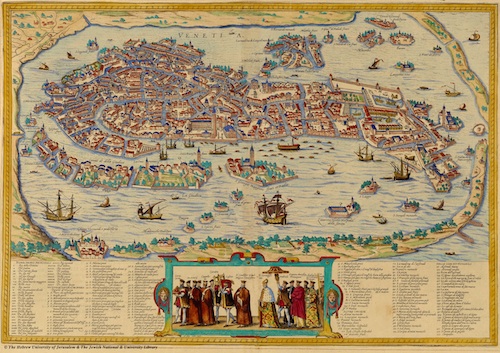Site informationRecent Blog Posts
Blog Roll
|
Jay Voss's blogMaybe the Only Way to Fly: With Wi-Fi
Submitted by Jay Voss on Wed, 2013-04-03 22:28
(Image credit: Southwest Airlines) I found myself in an odd place a few nights ago: I was flying at 40,000 feet from Chicago to Austin in a Southwest Airlines Boeing 737, and I was listening to this season’s first night of Major League Baseball. How did I do this, you might ask. Nope, didn’t leave my cell phone’s 3G on. I purchased Southwest’s in-flight Wi-Fi for the price of $8, and at 1 mbps I was set to go. You wouldn’t believe how much I enjoyed the flight. It was pure fun. Much of this must have had something to do with the fact that ever since 9/11 I’d associated air travel with inconvenience. I’d even assumed that in-flight Wi-Fi would be unwieldy. For, previously I’d heard that Southwest’s in-flight Wi-Fi hovered around 1 mbps, and being a literature guy even way back in high school when we covered such things in my computer science class (which means that I’d spend those nights reading Lord of the Rings rather than about bandwidth in my computer science textbook), this seemed like an inordinately small amount of bandwidth. Hence my elation when the sounds of summer were back and I was enjoying Major League Baseball by the time the beverage cart came around, with no bandwidth problems to speak of.
Renovating Austin: New Homes In Old Neighborhoods
Submitted by Jay Voss on Wed, 2013-03-27 09:00
(Image credit: Jay Voss) There’s an odd thing happening in Austin’s older neighborhoods: people are moving in, tearing down whatever 1930s homes they find on their lots, and in these spaces constructing decidedly modern dwellings. The subsequent structure stands out on its block like you wouldn’t believe. There’s such a disparity between the neighborhood’s older ranch homes and these new structures of corrugated metal and cantilevered edges. It’s a contrast between the standout and the ubiquitous, and the standout wins the eye every time. To make things more interesting: the locals I’ve asked hate these new structures, while those of us who’ve moved here recently tend to find them more inviting. I’m not sure where I stand on the issue. Although I see and understand the detriment one might perceive in continuity’s disruption, isn’t such materialistic continuity exactly what Austinites are constantly going out of their way to subvert? What gives? Aren’t we all supposed to applaud when something immaterial keeps Austin weird? Coming at the issue from a different angle, I’m a fairly serious student of architecture, and so for me it’s always refreshing to see tasteful structures going up (no matter what the situation, really). To this end I think architecture in its purist form encourages balance and harmony, and building a mansion amidst cottages (just for irony’s sake, I guess) is arrogant and misguided.
This Week's New Yorker Cover and Frank Lloyd Wright
Submitted by Jay Voss on Wed, 2013-03-20 09:00
(Image credit: The New Yorker) This week’s New Yorker cover features a rendering of Frank Lloyd Wright’s Guggenheim Museum, and I thought the occasion merited some meditation on what the museum means to us today. It’s an odd shaped building, and I can’t think of one that’s been built like it sense. Snøhetta’s Oslo Opera House, pictured below and opened in April 2008, is a great example of how contemporary architects are still designing buildings for the arts in brave new ways. (That fantastic structure mimics a Norwegian glacier melting into the sea, and many of its smart features work to invite all of Oslo, not just the operatic elite, to inhabit within and without.) But no structure for the arts built since 1960 has been as original as Frank Lloyd Wright’s Guggenheim Museum. Opened on 21 October 1959, the Guggenheim Museum is Frank Lloyd Wright’s last masterpiece. It was (more or less) commissioned in 1943, but the project took Wright 15 years and over 700 sketches to complete. Such revision is unusual for a Wright project, of course – most of his designs were completed in a matter of hours. (I suspect he was always thinking about his projects, and thus when the time came to get his ideas down on paper for clients there wasn’t much work to do.) What’s so unique about the Guggenheim Museum is that it’s a descending spiral. This design has two benefits: visitors can effortlessly enjoy the museum’s exhibit as they casually descend a ramp and, more importantly, the changing diameter of the spiral always allows for natural lighting at the art. Form follows function.
The Mid-2000 Nike Watch and the 2014 Apple iWatch
Submitted by Jay Voss on Wed, 2013-03-06 14:00
(Image credit: Macrumors.com) A few weeks ago I wrote about the breaking news that there might be an Apple iWatch on the horizon. For those of you who missed the post, I surmised that the device would be a useless accessory. We got the iPad for those moments between our iPhones and our iMacs (as Steve Jobs famously put it during the latter product’s initial announcement). Presumably we got the iPad Mini for those moments between our iPad and our iPhone, whatever those moments might be. And now we’ll have an iWatch for the moments between our iPhones and our….wait, what?! The idea of the possibility of this much interactivity strikes me as bizarre. The internet’s great and it makes my life easier, etc., but I’m the kind of guy who uses his iPhone as an alarm clock but waits to read emails from students until after a cup of coffee. Know what I mean? The idea of spending the first ten minutes of my waking day getting caught up on what happened in my work life while I was sleeping strikes me as a terrible way to live. And wouldn’t you get an iWatch to do just this? Wouldn’t you get an iWatch to get caught up on work when you should really be doing something else? All these new Apple products are starting to remind me of a lesson I learned in middle school: just because you can, doesn’t mean you should. Just because you can cram an iOS onto your wrist doesn’t mean you should.
Tags:
Check Out this Imaginative Map of Renaissance Venice
Submitted by Jay Voss on Wed, 2013-02-27 10:00
(Image credit: The Hebrew University of Jerusalem) I was reading Galileo the other day when I became interested in Renaissance Venice (the place had sublime music, visual arts, and all the culture that comes with the great flowerings of these things), and a few Google searches later I found myself staring at the map above for about 20 minutes. (Click here for a larger copy.) The map was drawn by Bolognino Zaltieri in 1565. Now, it’s already allergy season here in central Texas and I admit that I feel as though I’m on allergy meds without having even taken any, so my fascination with the map could be due to various things beyond my own intellect, however, you’ve got to admit – this map is awesome. It’s just crazy to imagine living amongst one of those waterways several hundred years ago. How about all the bridges? And do you notice that a pedestrian going from one mini-island to another might have to plan their trip in advance, as not every mini-island is connected to its peers? And then, of course, you wonder how it was all built without the aid of gasoline-powered construction tools. I thought I’d share it all with you. It’s just mesmerizing how a city built upon a marsh contains so many things, and how a mapmaker was able to portray segmented happenings and city life.
Finding Ossian: Fun in an Eighteenth-Century Pleasure Garden
Submitted by Jay Voss on Wed, 2013-02-20 13:58
(Image credit: Jay Voss) About a month ago I was fortunate enough to find myself outside of Ossian’s hall. I was on the banks of the River Braan in Craigvinean Forest, just to the west of Dunkeld, Scotland. Crazier still, though I’m writing a dissertation concerning the Scottish Enlightenment, I hadn’t set out that morning to find where Ossian came from. I was just in the area doing a bit of hiking (or “hill walking,” rather), and on the last day I set out for something I’d been told by a local that I just had to see. He called it “The Hermitage”. What I was to discover that morning was a pleasure garden designed in the later half of the eighteenth century for the Dukes of Atholl. So I set out from Dunkeld on a mulch path next to the strong River Tay, and about a mile and a half from town where the River Braan enters the River Tay I headed up into the hills and entered the Craigvinean Forest, which is a beautiful old-growth swath of Douglas firs. As I was soon to discover, what was crazy about the pleasure garden, and thus why I think it might be fun to present it here, was that it is a visual representation of the immediate fanfare that surrounded James Macpherson’s eighteenth-century cycle of epic poems.
Would you buy an iWatch?
Submitted by Jay Voss on Wed, 2013-02-13 10:00
(Image credit: Business Insider) Speculation has flared up this week about what Apple might think to include in an “iWatch”. This happened after Nick Bilton revealed in The New York Times blog Monday that the company has been experimenting with a curved form of Gorilla glass. Per usual, Apple has not commented on the product and we shouldn’t expect them to any time soon. But I thought it might be fun here to consider two things: first, a look at some of the many iterations of what an iWatch might look like, and secondly, a meditation on the potential uses of such a “smart watch”. Over the past few years I’ve been seeing ramblings of the coming of the smart watch, and I’m just not sure these things will be of use to twenty-first century humans. Younger people are increasingly less prone to wearing watches because, for the most part, they’ve already got a phone on their person. Are we to expect that we’ll want a smart watch in addition to a smart phone? Doesn’t such excess betray the supposed convenience of technology that made us fall in love with it in the first place?
Tags:
New Images of Richard III and Robert Johnson
Submitted by Jay Voss on Wed, 2013-02-06 10:00
(Image credit: BBC) It’s only halfway through the week and we’ve already seen new images of King Richard III and Robert Johnson. I can’t wait to see what the rest of the week has in store. These pictures are a big deal. The images help us to reimagine the persona of these figures, and seeing that I thought I’d take a moment in this week’s post to highlight the discoveries. The Tudor kings who came to the English thrown after Richard III perpetrated history that suggested Richard was a grotesque tyrant. Commentators on this week’s discovery are suggesting how traditional renderings, perpetuated by luminaries such as William Shakespeare, might be historically inaccurate. Shakespeare’s Richard III is a complex plotter who we appreciate for his witticisms, but whose disgusting figure personified his vileness. This understanding might be far from the truth, for whatever it’s worth. Richard III did have scoliosis (see the remnants of his spine below), but scholars are revisiting the extent of his supposed vileness. As for Robert Johnson, previously only two images of the guitar player were known to exist, one of them merely being the size of a postage stamp. In this newly authenticated image, we’re treated to another glimpse of someone we hardly know.
Is the relatively frequent disappearance of important data a natural feature of human societies?
Submitted by Jay Voss on Wed, 2013-01-30 13:33
(Image credit: Wikipedia) I’ve always been amazed that our ancestors lost copies of gospels we think existed, Ciceronian tracks we know were read, and Shakespeare plays we know to have been performed. How do such valuable things disappear? Who’s accountable for these losses? Who ever commissioned Vasari paint a fresco over da Vinci’s The Battle of Anghiari in the Palazzo Vecchio’s Salone dei Cinquecento? (No one today would dare destroy the Vasari – a masterwork in its own right – to see if the da Vinci lay underneath; though we’re 95% sure the da Vinci lies under it, I’d say.) In truth, the real history of these lost artifacts is much more complex, and it’s kind of hard to hold anyone accountable for the losses. Different cultures in different times appreciate different treasures from our past. There exists a whole bookshelf’s worth of scholarship about Shakespeare’s only moderate popularity in his own day, explaining perhaps how Love’s Labour’s Won or Cardenio could have fallen through the cracks. Nor should Vasari feel bad for taking a da Vinci battle painting from us. Leonardo was experimenting with a new painting technique after a bad experience with variations of the fresco medium in The Last Supper, and in The Battle of Anghiari we think he used a thick undercoat of something (possibly a wax) to help preserve the finished product. But the medium used in The Battle of Anghiari was even more prone to decomposition than that of The Last Supper, and thus the painting remained damaged and unfinished for over 100 years before Vasari picked up his brush. The drawing above is a 1603 copy by Peter Paul Rubens.
Dreamlinin’: Adventures on a Boeing 787
Submitted by Jay Voss on Wed, 2013-01-23 10:00
The other day I flew from New York to Houston on a new Boeing 787 Dreamliner. This was just a few days before the aircraft was deemed unsafe for travel. Now I count myself among the lucky few who’ve had a chance to experience the vehicle. What’s all the hype about? The plane is Seattle-based Boeing’s newest in 20 years, and clearly represents their bid to remain one of the world’s top airline manufactures. (Europe’s Airbus A380 has presumably pressured Boeing to innovate.) Before last week’s grounding of all Dreamliners around the world, Boeing was struggling to meet demand. Before last week’s grounding there were roughly 100 of these planes in the global skies, and roughly five times that amount on order. Carriers include All Nippon Airways, Japan Airlines, and Air India. The only American airline company that flies them as of this writing is United Airlines. They own six Dreamliners, and I was lucky enough to be flying on their first, which has been in operation since early November. The Dreamliner’s issues had been in the news prior to my flight, but I did not learn about them until I was leisurely reading The New York Times midflight. Problems I read about included cracking windshields, wings leaking fuel, and batteries catching on fire. All this made for one of the more notable flights of my relatively short life.
|
viz.
Visual Rhetoric - Visual Culture - Pedagogy
Site informationRecent Blog Posts
|
Jay Voss's blog |









Recent comments
2 years 29 weeks ago
2 years 44 weeks ago
2 years 44 weeks ago
2 years 50 weeks ago
3 years 4 weeks ago
3 years 4 weeks ago
3 years 4 weeks ago
3 years 6 weeks ago
3 years 6 weeks ago
3 years 6 weeks ago